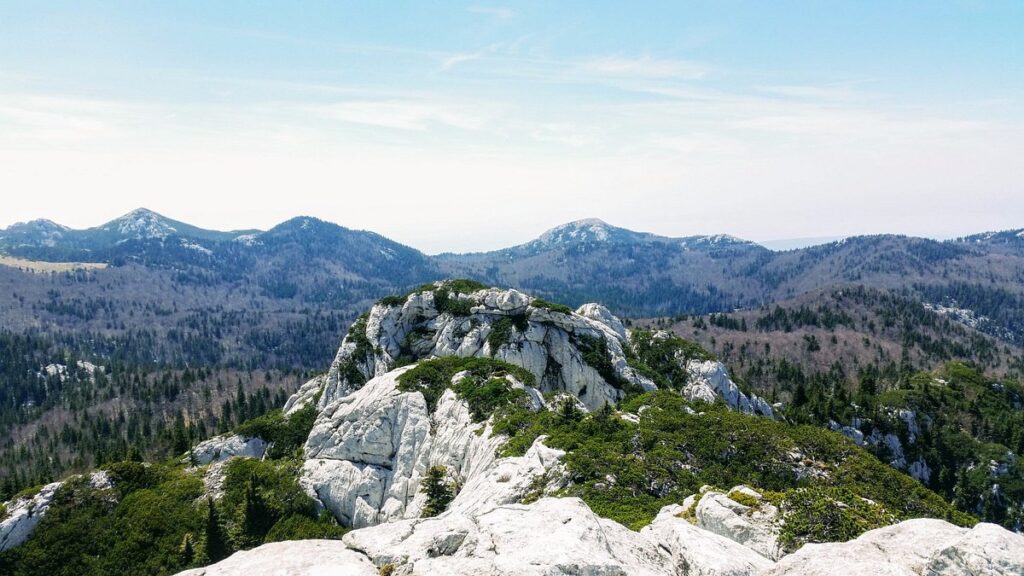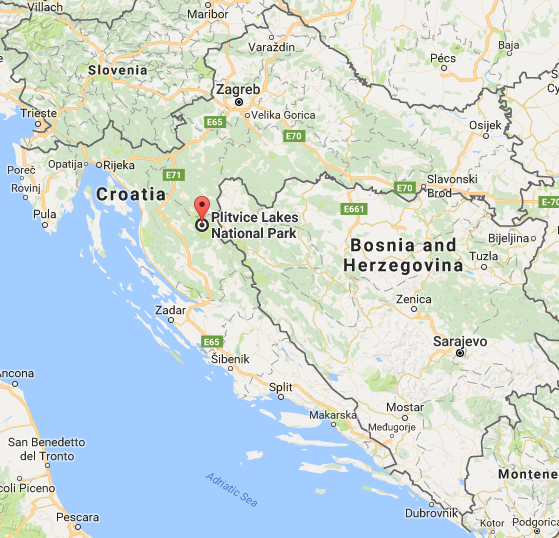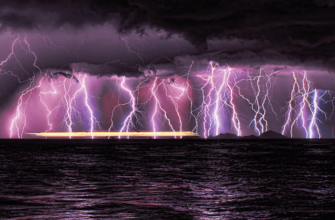Year after year, regardless of the season, Croatia remains one of the most popular tourist destinations. The Adriatic coast attracts tourists with its clean environment, warm sea and incredible views. At the heart of the country is located its main attraction – Plitvice Lakes. Croatia protects this natural wonder in every way. Since 1979 the park is on the list of UNESCO World Heritage Sites. This is a place where nature dominates man, not man over nature. If you come to Croatia, you must visit it.

- Guide to Plitvice Lakes
- History of the park’s formation
- Hiking trails of Plitvice Lakes
- What to see around the park
- Climate and weather
- Where to eat?
- Where to stay?
- How to get to Plitvice Lakes?
- Where can I park?
- Plitvice Lakes on the map
- Tourist information
- Hours of Operation
- Plitvice Lakes – price for 2023
- Is it possible to enter Plitvice Lakes for free?
- Recommendations and rules for visiting Plitvice Lakes
- What to take with you on a walk
Guide to Plitvice Lakes
“Plitvice Lakes” is the first national park in Croatia, which consists of 16 large and several small cascading lakes, 140 waterfalls, 20 caves, 1 ancient beech and coniferous forest, as well as thousands of representatives of the stunning flora and fauna of Croatia. The total area of the park is 300 km2. Almost all of its territory is occupied by forest and the main attraction – Plitvice Lakes – covers less than 1% of its area.
The lake system of the park is divided into Upper and Lower lakes. Twelve of them form the Upper and four lakes form the Lower. Water flowing from the Upper Tier to the Lower Tier of lakes flows into the noisy Plitvice waterfalls, at the foot of which the Korana River flows. The largest and most beautiful among them is Sastavci Waterfall.
On the territory of Plitvice Lakes live wolves, bears, roe deer, forest cats, otters, there are 1267 species of plants (streptocarpus, senpolia, begonia, fuchsia and others), including 55 species of orchids. There are also registered 161 species of birds, 321 species of butterflies, 21 species of bats.
All visitors must follow all instructions on the information panels and stick only to the marked paths.
Not all territory of Plitvice lakes is accessible for tourists. Do not forget that there live wild animals and grow unique endangered plants, so human contact with wildlife there can harm both of them.

History of the park’s formation
It is believed that the Plitvice Lakes in Croatia were formed 12-15 thousand years ago. The karst terrain of this area is associated with less permeable dolomite rocks and highly permeable chalk layers of limestone rocks, which are prone to the formation of cracks and fractures. The waters of the Corana River and other smaller rivers penetrated these fissures, dissolving the rock as they moved, and created surface sinkholes, depressions, columns, and underground caves and pits. That is, water cut canyons in the limestone deposits, but the dolomite rocks held the water back.
The Plitvice lakes are separated from each other by tuff barriers, but are connected into one water system by a series of waterfalls between the lakes. Even today, the tufa barriers are actively expanding, resulting in a permanent change in the appearance of the lakes and waterfalls. The name of the park “Plitvice Lakes” appeared in 1777, but until 1958 the park was inaccessible to tourists.
In 1991 the territory of the park became a field for the first armed confrontation of the war in Croatia, called Plitvice Bloody Easter, and several subsequent armed conflicts. Today the Plitvice Lakes have been completely demined, the tourist infrastructure has been restored and is actively developing.

Hiking trails of Plitvice Lakes
Plitvice Lakes offers its visitors 8 excursion routes to get acquainted with the lake system of the park. In order to facilitate the movement of tourists through the walking area, visitors entering the park through Entrance 1 can choose 4 routes marked in green. Visitors entering through Entrance 2 can choose 4 routes marked in orange. The routes take from 2-3 to 6-8 hours. A detailed description of the routes can be found on the official website of Plitvice Lakes. All trails have special paths, benches and signposts where to turn to stick to your path. You will not get lost.
Experienced tourists in their reviews recommend medium-duration routes. They say the views along the lakes are more interesting and the water is cooler in the heat
You can walk not only on your own two, but also ride an electric car train, ferry and pleasure boat on electric traction. They make several stops along the way; you can get off at any one, walk around and then ride on. All routes are circular: they end in the same place where they began.
Near the entrance to the park you can get a park map with detailed routes and marked places for taking pictures.
The easiest and fastest route with the most beautiful places of the Plitvice lakes is marked with the letter A, the longest and most time consuming – K. It involves a full detour around the entire lake region.

What to see around the park
Plitvice Lakes are part of the central region of Croatia – Lika. It is a protected area and gastro region, which is a combination of land and sea, and gives the opportunity to visit three climatic zones in just 30 km drive.
In the northern part of Lika you can not only enjoy a tour of the Plitvice Lakes, but also go horseback riding, visit a ranch with wild deer, rent a bike and discover new trails, visit the old town of Drežnik, try adrenaline sports: ride a trolley over the park, go kayaking on the river, ride quad bikes or check out the rope park.
In the southern part of the park you can conquer the mountains by bike or on foot, exploring beautiful historical sites, and after the walk you can enjoy a meal of Lycian cuisine.

Climate and weather
The Plitvice Lakes are located on the border of two climatic zones: continental and coastal. The continental zone contributes to the fact that coniferous and deciduous forests grow here and snow falls in winter. There is also a high humidity on the lakes. Therefore, the temperature in the park can be quite different from that on the coast. Be sure to familiarize yourself with the weather conditions before your trip and take warm clothes with you if necessary.
The largest number of tourists on the Plitvice Lakes is from June to August. The smallest number of tourists is in winter, but during this time it is quite cold. The best time to visit the park is in spring and autumn, when the conditions for visiting are already or still comfortable, but there are much fewer tourists.

Where to eat?
At Plitvice Lakes you can take food with you and organize a picnic, have lunch in local restaurants or eat in cafes. There are a total of 15 establishments in the park. Depending on the season, some of them may be closed, but you can always check this information on the official website of Plitvice Lakes or on site. In any case, you will not go hungry.
Where to stay?
If you come for a few days, you can either stay in the hotels and campsites on the territory of Plitvice Lakes or with local people who rent apartments nearby.
The park offers six lodging options:
Hotel Jezero is the most expensive and closest to the park entrance. It has a spa, sauna, and gym.
Hotel Plitvice – 200 meters from the hotel there is a bus station and entrance to the guest area of the park.
Hotel Grabovac – this hotel is already 9 km away from the central tourist area of Plitvice Lakes, but once a day you can order a free transfer to the park. The hotel has an ATM, currency exchange, playground, picnic tables and benches.
Hotel Bellevue – The hotel is next to Hotel Plitvice, close to the entrance to the park. Has its own parking lot.
Campsite Borje – located in a pine forest, close to biking and hiking trails. The campsite has toilets and showers with hot water, electricity, free Wi-fi, and a bus that takes you to Plitvice Lakes.
Campsite Korana is a tent camp near the Korana River, 6 km from the entrance to the national park. On its territory you can park your trailer, pitch your tent or rent a bungalow. There are all the amenities for a comfortable stay for guests.
Depending on the season, some hotels and campsites may not work. In the cold season, most often only one Jezero hotel is open. Therefore, take care of finding accommodation in advance. If the prices of hotels provided by the Plitvice Lakes Park do not suit you, you can find accommodation for all budgets from locals.
How to get to Plitvice Lakes?
You can get to Plitvice Lakes by your own or rented car, by cab or by public transport. You can also buy a bus tour offered by travel agencies. Travel time from the coastal resorts of Croatia to Plitvice Lakes is about 3-4 hours, depending on the particular resort.
Cities such as Split, Zadar and Zagreb have direct bus routes. They run once an hour (from Zadar may even more often), but it’s better to buy tickets in advance.
If you need to get to the park from Istria (Rijeka, Pula or other cities), there are no direct buses. You can go to Karlovac, and from there to Plitvice Lakes (a little over an hour drive).
It is not very convenient to get from Dubrovnik by bus. Therefore, it is better to make a stop in Split. From Dubrovnik to Split there are several daily flights.



The best way to get from Poreč is by car on the A1 highway Zagreb-Split. Public transport is not very convenient: you’ll have to make several transfers.
Before your trip we recommend you to download maps.me application and download a map of Croatia, so even if you are offline you can quickly find Plitvice Lakes on a map of Croatia.
Where can I park?
There are paid parking lots at Entrance 1 and Entrance 2 of the national park where you can park your vehicle. You must pay for parking at the exit.
Parking fees:
- Motorcycles are free
- Cars – 8 EUR/hour (from 01.06-30.09 – 10 EUR/hour).
- Trailer – 80 EUR/day (from 01.06-30.09 – 100 EUR/day).
- A car with a trailer – 80 EUR/day (from 01.06-30.09 – 100 EUR/day).
- Bus – 80 EUR/day (from 01.06-30.09 – 100 EUR/day).
Free parking is available at the Plitvice Lakes hotels if you rent accommodation there, as well as at Plitvica Selo, on the other side of the lakes. But there is no special entrance and tickets are not sold, so you have to walk a long way to the main entrance.
Plitvice Lakes on the map

Tourist information
Address
Dr. Ivo Pevalek Scientific Research Centre
Josipa Jovića 19
53231 Plitvička Jezera
Croatia
Official website: np-plitvicka-jezera.hr/en/
Hours of Operation
The park is open 365 days a year, but its opening hours depend on the season. Plitvice lakes are covered with snow in winter, so in the cold season most of them are closed to tourists and you can stay only in the hotel Jezero. Therefore, before you go, it is worth checking the opening hours on the official website or to clarify this information, contact the representatives of the park: info@np-plitvicka-jezera.hr. There you can also book tickets online, so that you do not have to wait in line
Plitvice Lakes – price for 2023
| Category of tourists | Plitvice Lakes – cost per person for 1 day (EUR) | ||||||||
| 01.01 – 31.05 01.11 – 31.12 | 01.06 –30.06 | 01.07 – 31.07 | 01.08 – 30.09 | 01.10 – 31.10 | |||||
| until 3 p.m | after 3 p.m. | until 3 p.m | after 3 p.m. | ||||||
| Adults | 80 | 150 | 200 | 150 | 250 | 150 | 180 | ||
| Adults – group (from 10 people) | 75 | 135 | 180 | 135 | 220 | 135 | 160 | ||
| Students** | 50 | 70 | 125 | 100 | 125 | 100 | 110 | ||
| Students – group (from 10 people) | 45 | 60 | 110 | 90 | 110 | 90 | 100 | ||
| Children (ages 7-18) | 35 | 35 | 70 | 50 | 70 | 50 | 50 | ||
| Children (7-18 years old) – group (from 10 people) | 30 | 30 | 60 | 45 | 60 | 45 | 45 | ||
* Children under 7 years old and people with disabilities are admitted FREE OF CHARGE.
** Only if you have a student card.
Is it possible to enter Plitvice Lakes for free?
Some tourists have managed to enter the territory of Plitvice Lakes for free. It is said that near Gate 1 near the observation deck there is a path that leads directly to the park entrance already behind the ticket office.
But we don’t recommend sneaking into the park for free!
- Without a ticket, you will not be able to use the water transportation and the bus.
- There are now many guards in the park who escort tourists. You have little chance of going unnoticed when leaving the forest near the ticket office.

Recommendations and rules for visiting Plitvice Lakes
What you should not do on the territory of Plitvice Lakes
- Collect or buy “souvenirs” of natural origin “out of hand”. It is strictly forbidden to pick flowers.
- Feeding of animals and fish including.
- Bathing in lakes.
Please note! Until 2008, you could swim in the park in the lake Kozyak, but now it is strictly forbidden to bathe in any of the lakes. Every year some tourists still dare to dive into the lake in the far corners of the park, but it all ends up with a fine. It is said that the names of the lakes most often correspond to the people who have drowned in them. Perhaps this is the main reason for the bathing ban.
- Throwing trash anywhere in the park except in trash cans.
- Walk off marked trails.
- Fishing.
- Having picnics. You can do this only in specially equipped places.
The Croatian authorities try to preserve Plitvice lakes in their pristine state as long as possible, so be aware, take care of the nature and follow the rules of visiting.
What to take with you on a walk
- Comfortable clothes and shoes (good if they are sneakers with a shock-absorbing sock and heel).
- Sunscreen and sunglasses, headgear (in summer).
- Plenty of water.
- A raincoat or umbrella.
- A warm sweatshirt or jacket/windbreaker.
- A camera or phone to take a nice picture.
Do not bring a stroller, very small children and dogs. The paths there are narrow and made of logs. Stroller wheels will get stuck all the time. This is a mountainous area, some places you can’t get up to with kids. In addition, long walks neither kids nor small dogs can handle. You will have to carry both of them.
We advise you to visit Plitvice lakes on weekdays just before their opening to enjoy this unique natural wonder with as few tourists as possible. Without crowds of other people, who also came to see the Plitvice lakes, the photos will be much better, and the walk will be more pleasant.
On your way back, take some souvenirs for yourself and your family: natural cosmetics and real mountain honey are sold in special stores on the territory of the park.
To travel without problems, before the trip be sure to get on our website travel insurance, and during the trip itself, stick to all our tips and recommendations.





